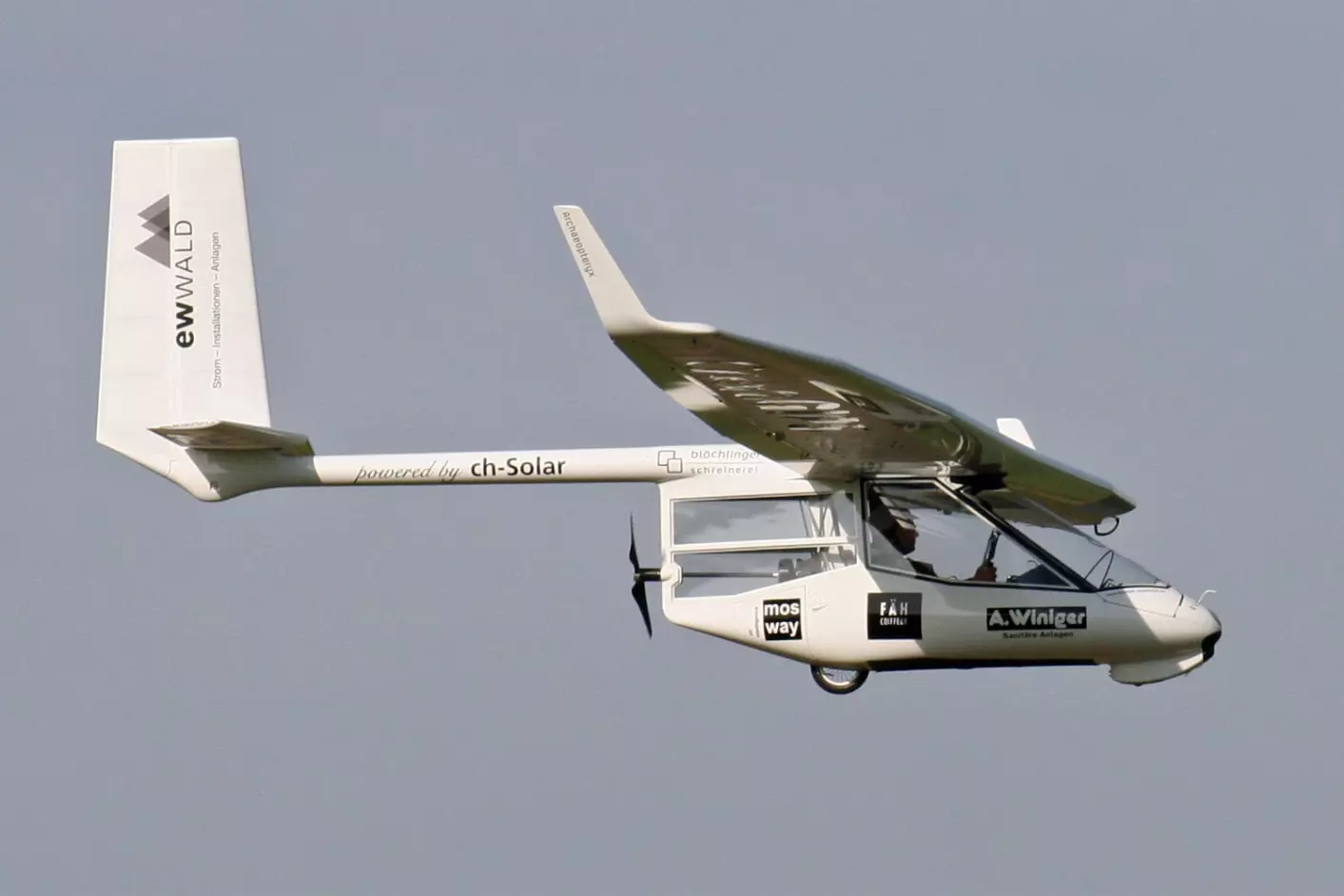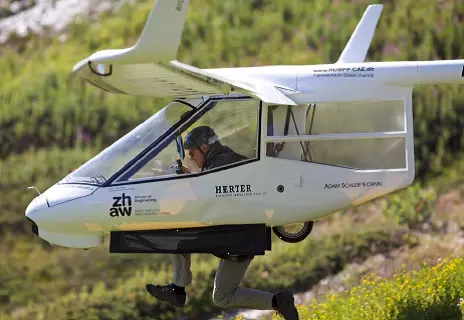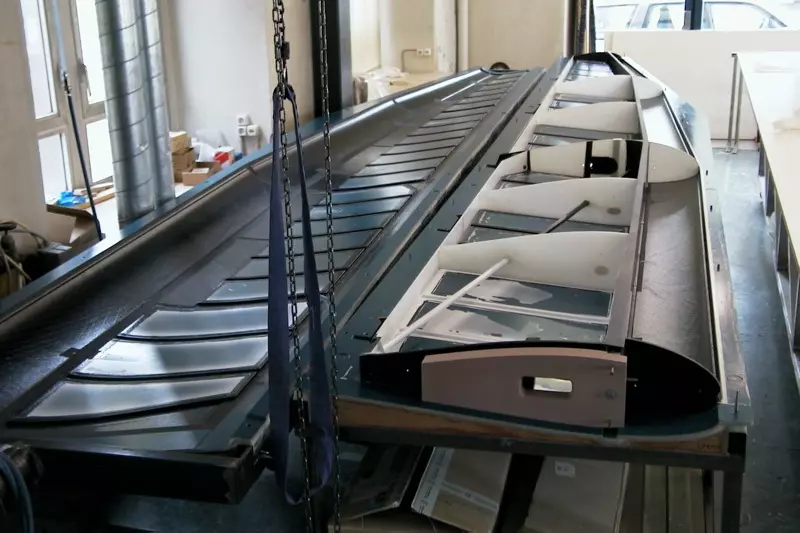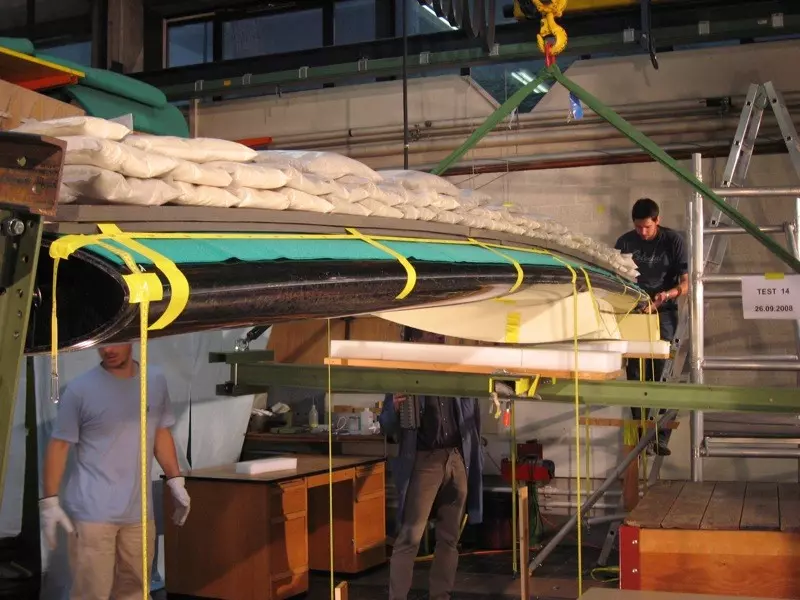Project Example: Archaeopteryx
New Dimensions of Flying
Flying like a bird – taking-off like a bird - with a flight performance of a modern glider! The dream of flying, which Otto Lilienthal made reality through meticulous engineering and pioneering spirit, has been brought to perfection by using modern fiber composite materials and the wealth of experience gained during 100 years of aviation development.
Prehistory
Light aircraft were already being built at Ruppert Composite in the 1970s. The Canard 2FL development was very close to the goal of a foot-launching fixed-wing aircraft. The duck wing arrangement along with the glass fiber composite construction promised a high aerodynamic quality. However, the aircraft was not easy to fly and was still too heavy for a real run start. In the 90s, the increasingly available carbon fibers gave new impetus due to their higher strength limits in comparison with those of glass fibers.
The Next Generation
Roger Ruppert grew up flying and building composites in his father's workshop. With his mechanical engineering studies at today's ZHAW in Winterthur, he found the right environment to scientifically rethink the idea of a fixed-wing, ready-to-fly aircraft. In the course of his project and diploma theses in 1998 with Prof. Robert Kaeser and Peter Frei, he was able to show that an aircraft with a dead weight of only 50 kg is feasible with respect to the strength requirements of a certified aircraft as well as to an excellent flight performance. From the experience with the Canard, a classic wing arrangement with a tail unit on a tail boom was chosen. The calculations were so promising that it was made a reality at the former Winterthur technical center.
Ultra Lightweight
The aim was to build a launchable aircraft with less than 50 kg. Every gram counts! It was only thanks to the increasingly thin carbon fiber fabrics that such a light design was possible. The wing has a carbon fiber spar. The front part forms a torsionally rigid tube (D-Box) with the spar. Ribs are arranged behind the spar. The entire end edge consists of ailerons and a flap (Figure 1). Together with the high lift profile, it was possible to achieve a low minimum speed necessary for a run start on a slope.
The fuselage is a tube framework: two aluminum tubes to the right and left of the pilot take up the flight control devices.. They are connected by carbon fiber tubes to the tail unit. The control surfaces at the rear have thin-walled carbon fiber tubes as load-bearing elements. The wall thicknesses of all fittings made of aluminum were reduced in weight to the absolute minimum and milled at the Center for Product and Process Development (ZPP). The first flight took place in 2001. Test test pilot Andy Hediger was impressed. In the following years, the aircraft was continuously improved through coverings, many detail modifications and winglets.
From Prototype to Series
However, the construction was far too complex for serial production. In 2006 Roger Ruppert decided to get the aircraft ready for serial production. The aerodynamics were revised and the design concept was modified in such a way that only a few individual ribs were required (Figure 2). The components were tested in 2008: the fuselage, wings and tail unit withstood the required load factors. In 2009 the maiden flight of the completely revised Archeopteryx took place. Today you can buy a complete system for all types of starts: the last variant was the self-start. First, an electric drive was tested on the prototype with students from the ZHAW - probably the lightest twin-engine in the world! For the serial production, a modular, central drive was installed behind the pilot (Figure 2). The system can be attached or removed with a few simple steps

Run Start
For the run start (Figure 3), the pilot carries the aircraft on his shoulders. Even a little wind ensures that the weight on the shoulders disappears. First the pilot hangs in his harness like a hang glider. When the start is accomplished, he can lift his feet and operate the rudder with his feet.
He then lies like on a deck chair and can enjoy flights lasting several hours over considerable distances. In the meantime, long-distance flights over distances of 600 km have been conducted by gliding and Archeopteryx pilots are at the top of the international long-distance flight ranking.

Auf einen Blick
Participating institutes and centers:
Project Partner: Ruppert-Composite AG http://www.ruppert-composite.ch/
Financial contribution: KTI
Project status: completed

